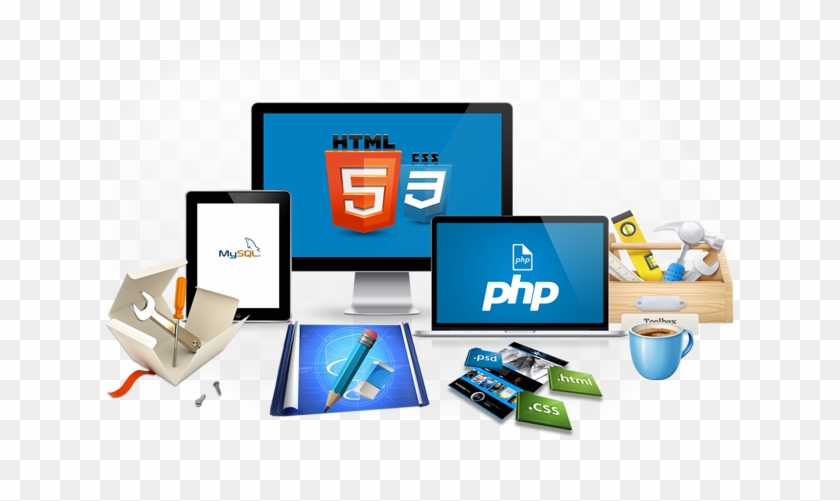The Importance of Typography in Any Web Design
Typography is one of the core principles of good website design. It refers to the arrangement, style, and size of text on a website. But typography is not just a design with letters or arranging typefaces and fonts in unique ways. It is a practice that syndicates art, skill, and craftsmanship to make all copy on a website clear, readable, legible, and scannable for users. Good typography needs three things:
Art in the aesthetic aspect, skill in producing effective communication, and craftsmanship in execution.
Combining the three is the key to making website content more engaging and easier to navigate. Strategic typography is even used to add specific branding styles to content.
If we show you a piece of text written in a sleek and minimalistic font, you will immediately relate it to a technology brand.
If we show you the same text written in a playful font, you will immediately relate it to a children’s brand.
This is just one example of why most mobile app design trends and UI UX trends evolve or fade away with time, but, the importance of high-quality typography in web design never diminishes. You can also avail of website design services in the DUBAI UAE and they will help you select the ideal typography that complements your business and website.
Typography will always be one of the core principles of good website design because professional providers of web and UI UX design services know the negative effects of poor typography. Poor typography can make a website hard to navigate and its content frustrating to read. Whereas good typography can make website visitors feel happy.
Several years ago, a famous MIT study confirmed that visually appealing fonts make humans feel happy whereas visually unappealing fonts make us feel sad.
In 2022, a similar study was performed to understand how typography impacts user engagement on social media platforms. According to the study, image posts that featured visually appealing typographic elements had higher engagement rates.
Decades of similar studies have directed the way all leading providers of web and UI UX design services operate. They plan out every aspect of their websites’ typography. From the choice of font to the size of the letters to the softness or roughness of the shapes in the type-font: every little detail matters for professional web designers.
Do not forget the number of lines/spaces in between each paragraph and the colors of the letters in relation to their background as well! In web typography, all of these subtle details matter because they can all be manipulated to evoke unique emotions from readers.
So, let us explore the overarching purpose of typography in web design.
The Purpose of Typography in Web Design
Many people will rightly argue that the main purpose of typography is to clearly convey information. In fact, Emil Ruder, the pioneer of the famous “Swiss Style” in professional typography claimed that typography has only one duty which is to “convey information in writing.” But, he said this back in the 1950s. Does this claim hold true when it comes to typography in modern-day web design?
To answer this question, let us assess how the role of typography has changed from the print media days to modern times from the POV of a reader:
In a typical printed book or newspaper, the experience of the reader is mostly controlled. All text is linear, presented in distinguishable blocks, and is revealed page-by-page. Some books, newspapers, and magazines may have footnotes, endnotes, or creative distributions of text.
But in most cases, the reading structure and the way readers engage with the text they find in print media are very consistent.
That is why books and newspapers are so easy to skim through. Readers may choose not to read some sections of the content. But, the content is always available to them on the same level.
The structure of a website reading experience is completely different. Unlike with books or magazines, the reading experience on websites is divergent, not linear.
The average visitor on a website has many options to instantly end the reading experience and switch to another site. This is not the same as a reader consciously choosing not to read certain sections of the book.
Unlike book readers, website visitors can get distracted. Even worse, certain types of typography can instantly turn them off. When you are reading a book, you can expect a specific type of reading experience from the start.
On a website, the reading experience in one section may be awesome but awful in another. And whenever things get ‘awful,’ visitors log off without any hesitance.
Hence, in web design, the main purpose of typography is not to convey information. It is to get the visitor to engage with the content. It is to signal to the visitors that there is content worthy of reading on the page. It is to make them think good things about a brand just on the basis of how well the content on the website is presented.
This takes us back to the quote from Wolfgang Weingart that we mentioned at the start of this section. He was the father of New Wave typography and his work is hugely influential in modern-day web design. He and several other web designers clarified these renewed purposes of typography in modern-day web design. With the current advancements in technology, if you need help with choosing the perfect typography for your website design, you can easily reach out to any professional website design company in the DUBAI UAE or worldwide and they will help you accordingly.












